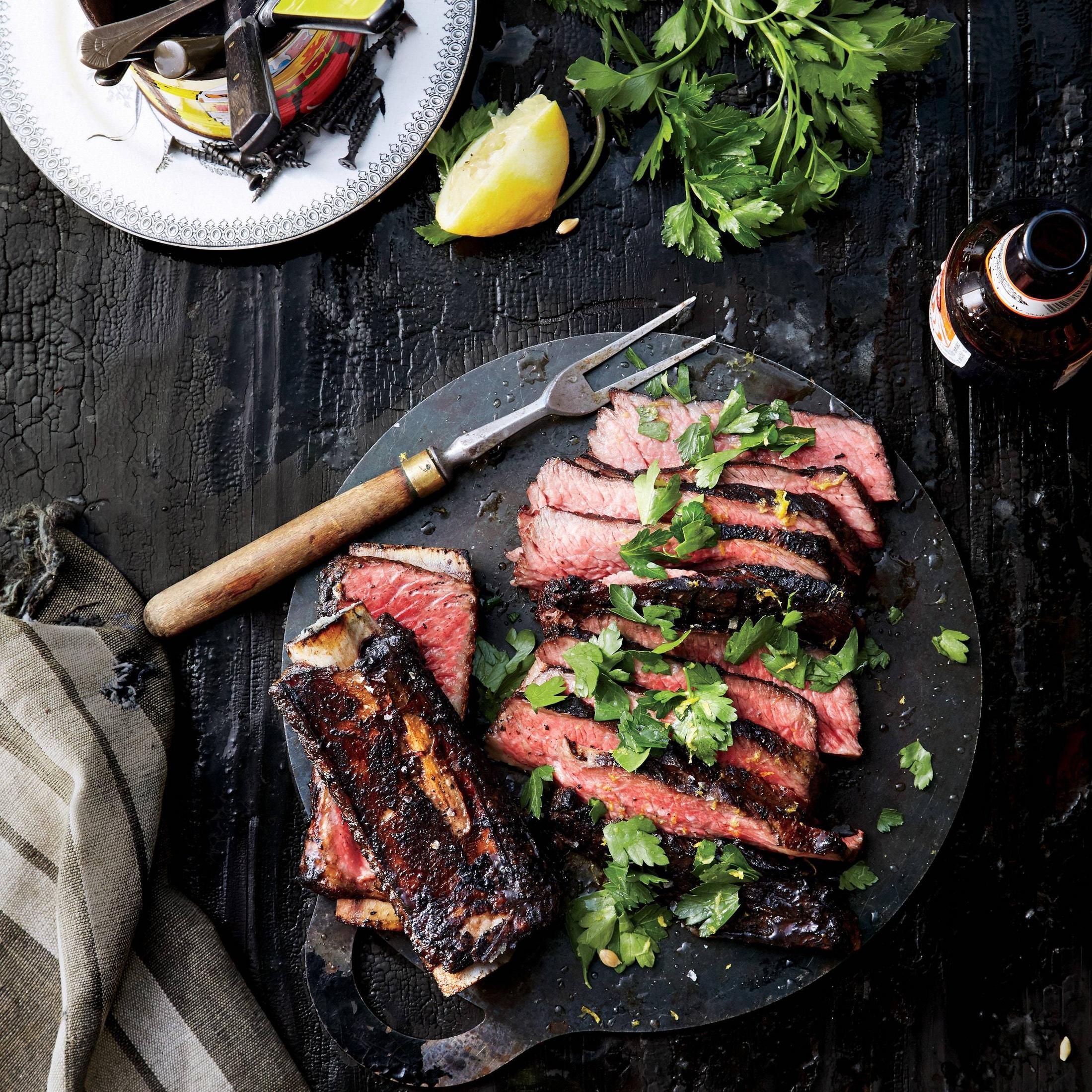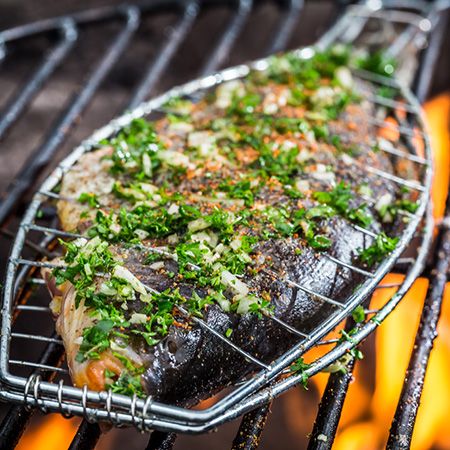
This article will provide some useful tips and tricks for applying dry rub. To create an even coat, rub the spice mix onto meat using your hands. If you are preparing meat that has skin, rub the rub under the skin and along the edges. This will improve the flavor of your meat. These are the key ingredients to remember before applying dry rub.
Be sure to moisten the meat before you rub it
If you want your meat to be tender and juicy, moisten it before applying a dry rub. Salt can be used to enhance flavor and penetrate meats. It also intensifies flavors and aromas, which is why it should be a part of any dry rub recipe. Salt is typically added to your rub in a one-to-one ratio with the meat.
Apply a dry rub to your meat on all sides. Season the "sides" of thick cuts and the meat's main face, especially if you are using a dry rub. Next, rub the seasonings into your meat with your opposite hand. This is necessary to ensure that the seasonings penetrate the meat. The dry rub can be applied immediately to the meat or you can wait up to 30 minutes before coating it again.
Make sure you wipe off the dry rub completely using a damp towel. This will help dry rub adhere better to meat. You can cover the meat with plastic wrap once it has dried completely. After that, let it cool in the fridge for at least 30 minutes. Before applying dry rub, it is important that the meat has been properly marinated. This will prevent bacteria from getting into the meat, and will ensure that the dry rub remains intact and free of juices.
You should remember that marinades don't just enhance the flavor of your meat. The enzymes in the protein chains also make the marinades tenderize the meat. Adding liquids to a dry rub will not change its flavor, but will help to make it adhere to meat with a smooth surface. You might marinate your meat at least a couple hours before using dry rub. This will allow it to soak overnight.
A moistening method is another way to make a dry rub. Dry rubs often use brown sugar as a base. This sugar is slightly sticky and acts as a glue to the meat. Maple or turbinado sugar is another good choice. However, this type of sugar burns easily so be careful. You can also use a combination of both. Your rub should be suitable for the kind of meat that you're using.

After your meat has been marinated, add a second layer with rub. This is an excellent way to add flavor. Make sure to rub the rub well so it sticks to meat. You can also use commercial rubs or mix your own to create a customized blend. It all depends on where it is found. According to science, a tablespoon per pound of meat is the recommended amount. However, it is important to experiment and discover what works best for your needs.
After adding sugar or paprika, rub with dry rub
You can add spice to your ribs by simply sprinkling sugar or paprika on top. Then, sprinkle with smoked paprika. You can find several kinds of paprika, but you should choose the type that has the highest level of heat. If you are not certain, you can also buy paprika without a tag. This type ofpaprika is not as flavorful as the labeled.
Dry rubs can be made quickly and stored for later use. It is a combination of dark brown sugar and savory spices that will encourage browning. It is a sweet-savory mix that enhances the flavor of meat. You can also make your own mix using your favorite herbs for added variety. You will be more satisfied with it the more you experiment!
Apply a dry rub to meat before you apply it. One and a half lbs of meat should be covered by the rub. You want to achieve the best results. Rub the rub all over the meat and massage in. Use a dry rub to coat chickens, pork ribs, or ice cream sandwiches. Adjust the amount to suit your cooking method.
Groceries sell commercial rubs. These rubs are well-received and popular. Commercial rubs often start with a base of salt. Salt is cheap and adds bulk. But paprika is the best seasoning for meat. You can customize the flavor of your ribs by making your own rub. Mixing your own rub is a cheaper option than buying a commercial rub.
Dry rubs are made with herbs and spices that enhance the natural flavor of meat. The right combination can make cheap cuts of meat look like a million dollars. The ingredients in a dry rub may include different kinds of salt, sugar, chili peppers, garlic powder, mustard powder, and other herbs and spices. These rubs make your meat taste great and are easy to store.
Dry rubbing is different than dry brining in that you don't have to apply seasonings before hand. Avoid rubbing your meat with sauces if dry rubbing is done ahead of time. This can lead to meat becoming too soft and mushy. However, most people prefer to apply the dry rub directly before grilling.
Signature ingredients in dry rubs
There are some key points to remember when making dry rub. After 9 months, spice and herbs often lose their taste and aroma. For a better flavor, grind fresh herbs or spices in a coffee machine. Mix your dry rub just before you use it. This will prevent the herbs and spices from losing their flavor. It is possible to prepare the dry rub ahead of time, but it is best to do this right before you serve it.

There are many varieties of rubs that you can choose from. The first is the savoury one. Its main ingredients include spices such as onion powder, garlic powder, dry mustard, paprika, and chile. It also has spices like red chili flakes and dried chipole, which make it hotter. Aside from meat, it can also be used on vegetables and inedible objects, such as fish.
A dry rub is a combination of herbs and spices that is applied to meat before cooking. There are many types of rubs, each with different amounts of spices. A barbecue rub may contain coarse salt, pepper, and pepper; a Jamaican Jerkrub, on the other hand, includes allspice. Nutmeg. ginger, garlic, and cayenne pepper. Add a small amount of dried rice to your rub to create a flavorful, high-heat rub.
Make sure to keep your dry rub in an airtight container. It can be used right away, or it can be stored in a sealed container for several weeks. After blending the ingredients, you can then spread it on a rimmed baking sheet or in a large bowl and rub the meat with it. The meat will absorb the flavor of the dry rub and will taste amazing! After the dry rub is applied to the meat, let it rest overnight.
Dry rubs add great flavor to meat without needing to use any additional sauces. Dry rubs can be made quickly and will give your meat flavor without the need for sauces. They are quick and easy to prepare, and can be used right before dinner. You can mix them yourself or purchase dry rub ingredients that you shake on the meat. You can even freeze the dry rub after making it.
Salt is an important aspect of making your own rub. Salt is an important ingredient in most rubs but it can be difficult to get rid of. Many rub makers don't understand how salt is removed so they don't offer a salt free version. It is best to separate the salt and rub them while you make them. This gives you more control over the application and helps to avoid salt from interfering.
FAQ
What is the best career path for someone who wants to be a chef? How do I get started as a chef?
An apprenticeship is a good way to start your career as a chef. Apprenticeships are a way to earn a living while you learn. After completing your apprenticeship, you can apply for a position as a sous chef. Sous chefs supervise cooks and assist them with tasks like making salads and desserts. They also oversee the restaurant's operations.
What does it take to become a chef in the United States? What is the average career path?
It takes five years to become a chef. In this period, you will learn basic cooking skills and experience as a kitchen assistant. After your training is complete, you will be eligible to apply for a job as a sous chef, executive chef, or line cook. The annual average salary of a chef is $25,000-$60,000.
Where can I find online cooking classes for free?
Many websites offer free cooking classes. You can search YouTube for videos that teach you how to prepare different meals. You may have access to thousands upon thousands of recipes on some websites. The sites typically charge a monthly fee but you can test them for free for a period of 30 days.
Statistics
- On average, chefs earn $58,740 a year, according to the BLS. - learnhowtobecome.org
- According to the BLS, chefs earn $58,740 a year. (learnhowtobecome.org)
- under 10 Kids have been taught that there is special food just for them, and Fiese says that 10 percent of kids will throw a tantrum if they don't get the food they want. (washingtonpost.com)
External Links
How To
How to make a perfect eggroll
Omelets is one of my favourite breakfast foods. But how do you make them perfectly? There are many recipes and methods I tried, but none worked. So I wanted to share some tips and tricks so that you can make delicious, fluffy omelets every morn.
Before we start making omelets, let's remember that eggs are temperamental. It is important that eggs are fresh from an organic market and kept cool until used. If you don't keep them cold enough, the whites won't form properly, and the yolks will break down too much and become runny. This will make your omelets appear strangely colored. If you intend to cook your eggs immediately, it's best to use room-temperature egg.
Another tip is to separate each egg before adding them to the saucepan. You don't want any white to get mixed up with the yolk because this could cause the omelet to curdle.
You could end up burning the bottom half of the egg if the egg is added directly to the heat source. Instead, microwave the egg for 10 seconds before adding it to the pan. The heat from the microwave cooks the egg just enough without overcooking it.
Next, let us talk about how to mix the eggs. When mixing eggs, it is important to thoroughly beat them. To do this, grab the bowl of the mixer and turn it upside down. Next, shake the bowl vigorously. By doing this, the egg is thoroughly mixed with the air in the bowl.
Now it's time to have fun: pour the milk into the mixture. Pour half the milk into the beaten egg mixture and then fold in the eggs. Do not worry if you see streaks of egg; they will disappear when the omelet is flipped.
After folding the eggs, place the pan on medium heat and wait for the oil to start sizzling. Once the oil starts getting hot, add 1/4 cup of butter to the pan and swirl it around to coat the entire surface of the pan. Carefully open the pan's lid and add salt to the pan. Salt will prevent the omelet sticking to the pan.
Once the omelet forms, cover the pan again. Let the top side set completely. Flip the omelet upside down or with a spatula. Cook the other half for another minute. Serve immediately after removing the omelet from its pan.
This recipe works best using whole milk. Skimmed milk is also possible.